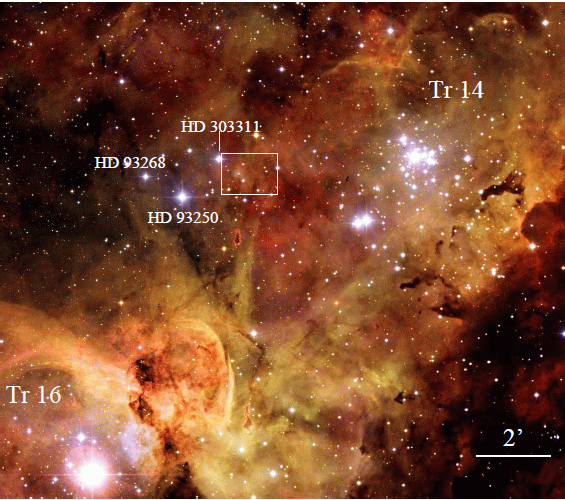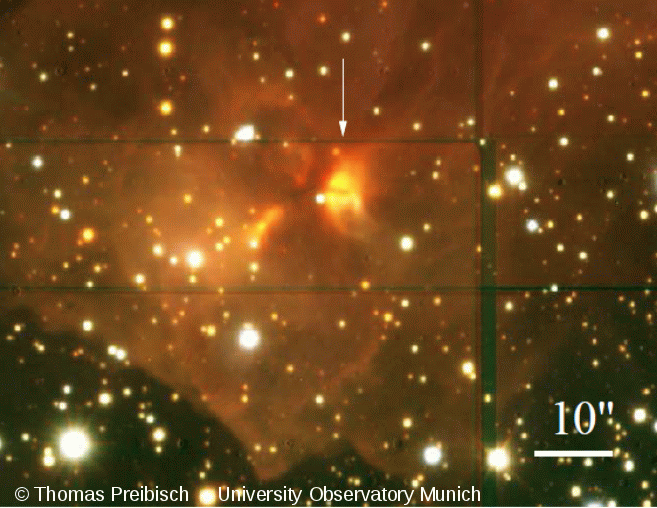In our deep near-IR imaging survey of the Carina Nebula obtained with
HAWK-I at the ESO VLT we serendipitously discovered an
optically invisible infrared source with very interesting morphology.
The image above is a three color composite of our J- (blue), H- (green), and
Ks-band (red) images.
Whereas the object
was detected as an apparently point-like source in earlier
infrared observations, only the
superb image quality (FWHM ~ 0.5 arcsec) of our HAWK-I images
could reveal, for the first time, the peculiar structure of the object.
It consists of a very red point-like central source that
is surrounded by a roughly spherical
nebula, which is intersected by a remarkable dark lane through
the center.
The dark lane is interpreted as the shadow of a circumstellar disk
seen nearly edge-on. Its diameter corresponds to 5500 AU.
We constructed the spectral energy distribution of the object
from 1 to 870 micrometer and performed a detailed radiative transfer modeling
of the spectral energy distribution and the source morphology.
Our modeling shows
that the central object is highly luminous and thus must be a massive
young stellar object, most likely in the range 10-15 Msun.
The circumstellar disk has a mass of about 2 Msun.
This infrared source in Carina is thus
one of the most massive young stellar objects for
which a circumstellar disk has been detected so far.
The size and mass of the disk are very large
compared to the corresponding values found for most other similar objects.
Our analysis of this object is published in:
Detection of a large massive circumstellar disk around a high-mass young stellar object in the Carina Nebula,
Th. Preibisch, T. Ratzka, T. Gehring, H. Ohlendorf, H. Zinnecker, R.R. King,
M.J. McCaughrean, J.R. Lewis,
Astronomy & Astrophysics, 530, A40 (2011) preprint
The two figures below show optical and infrared images of the
location and the surroundings of the disk object.
The left frame is an optical image (extracted from the ESO photo release 1031)
of the central part of the
Carina Nebula; the white box marks the area shown in our near-infrared HAWK-I
image on the right.


Follow these links to get more information about the
Carina Project
of the
Young Stars and Star Formation Group
at Munich Observatory.
Goto my homepage
Last update: 15 April 2011 ---
This website is optimized for
Mozilla Firefox

